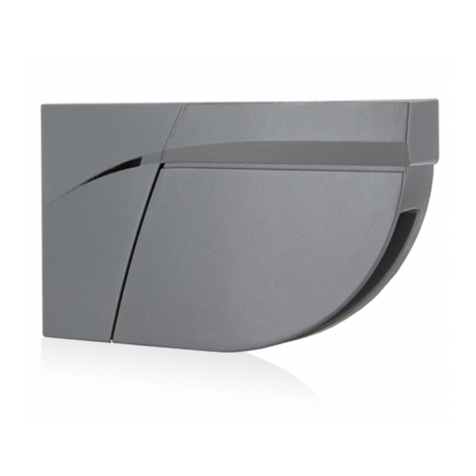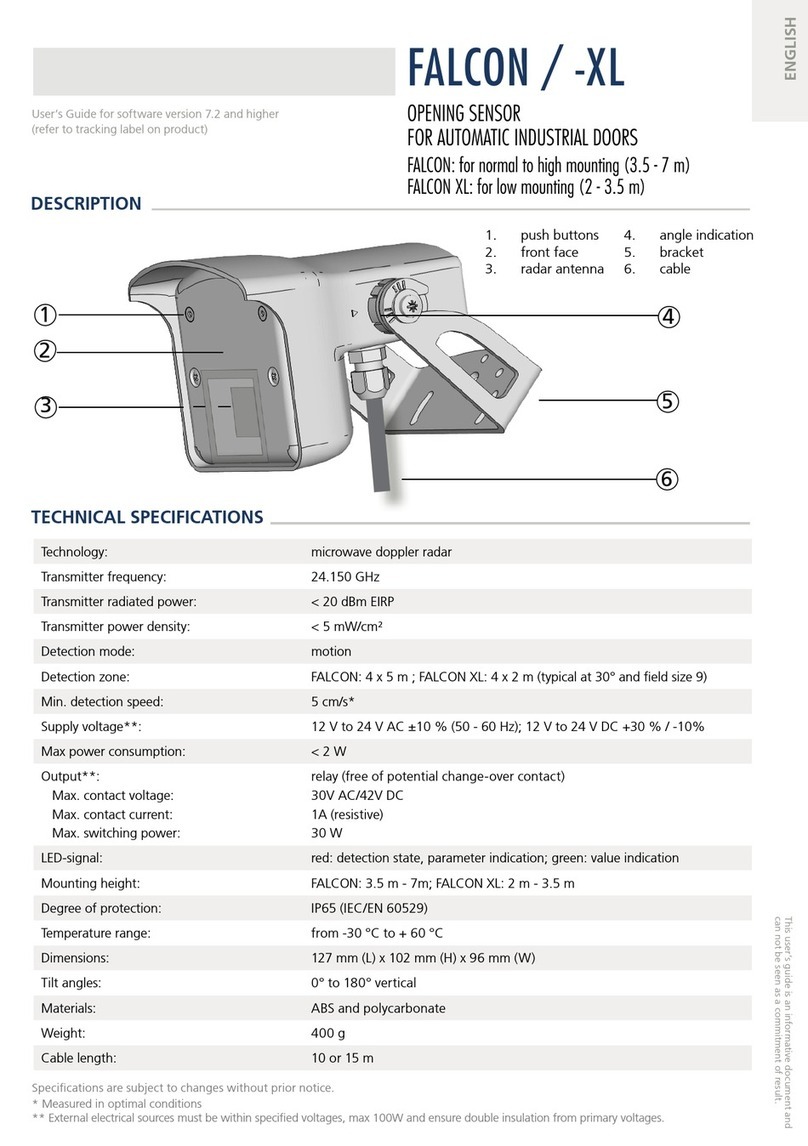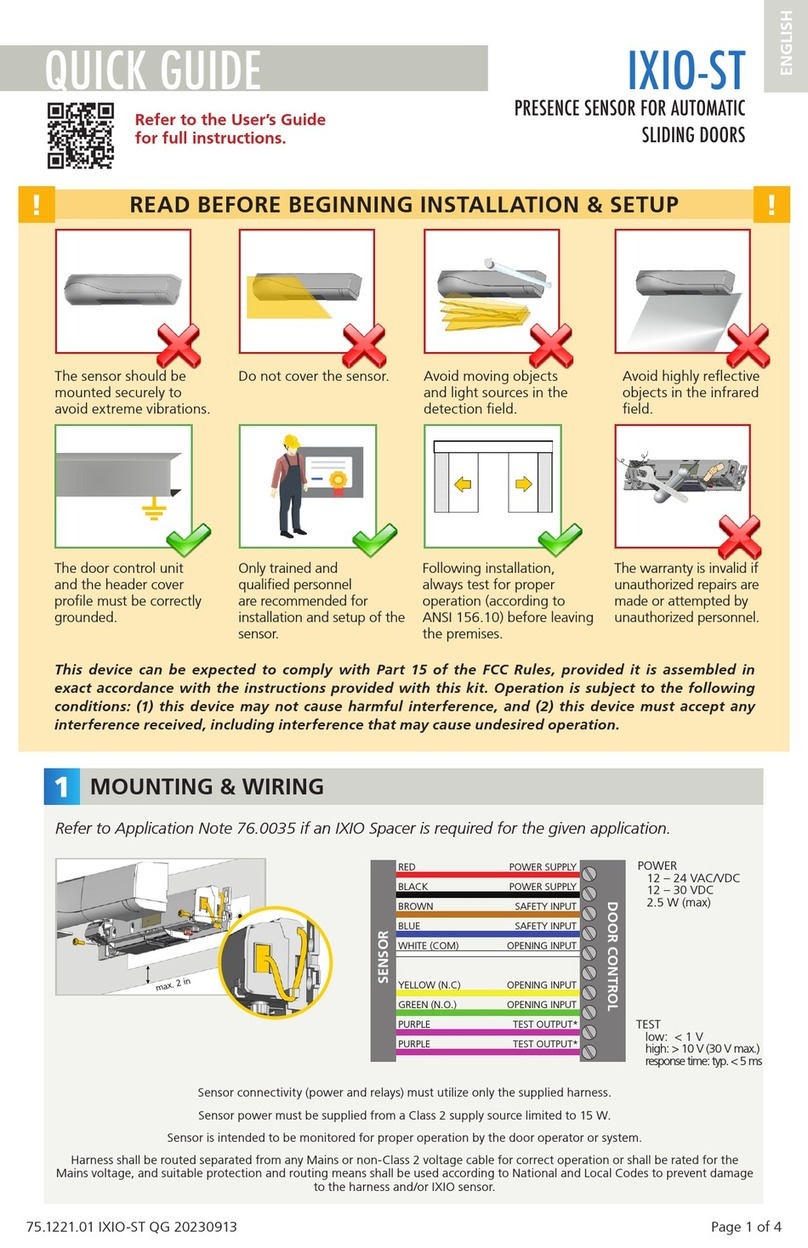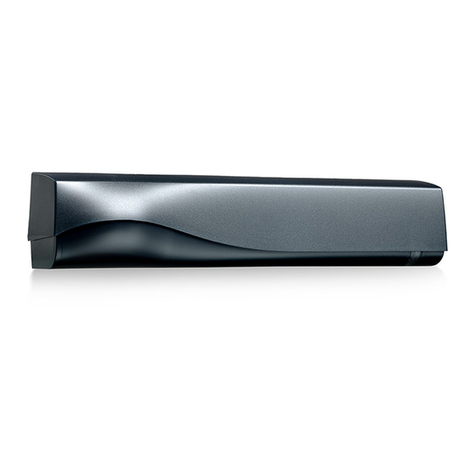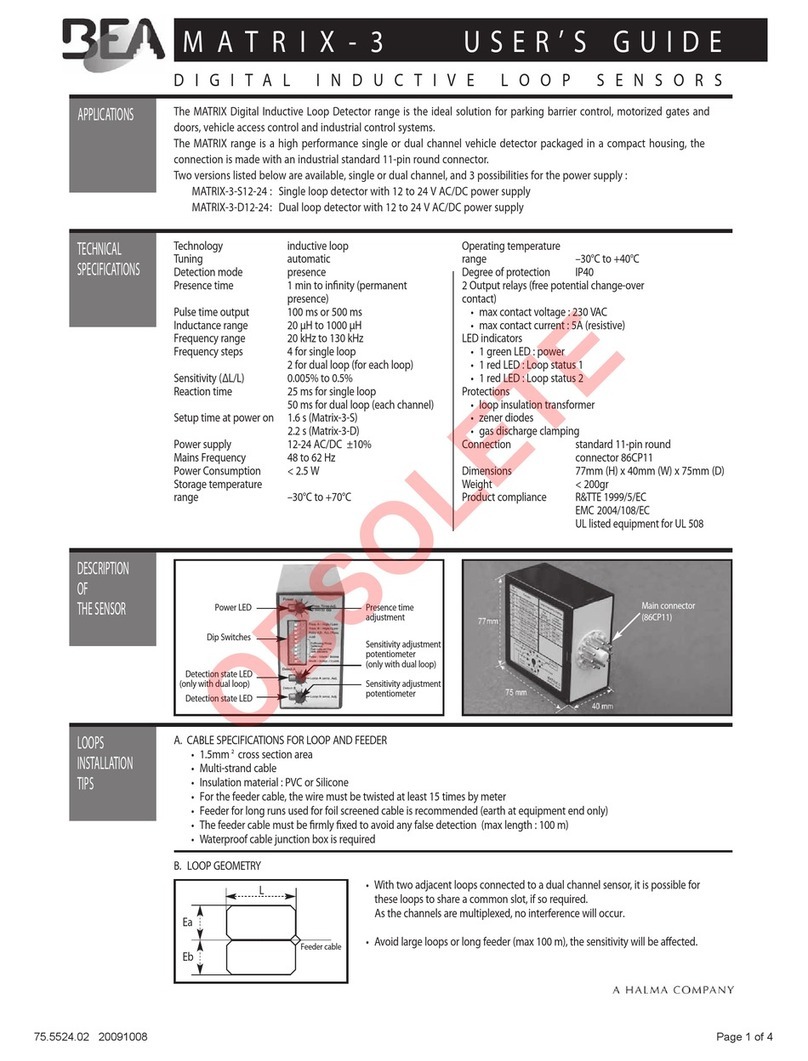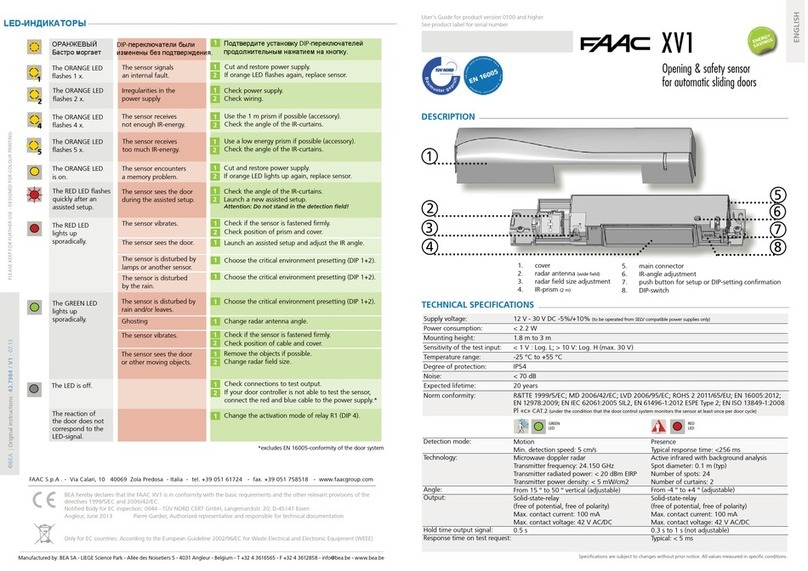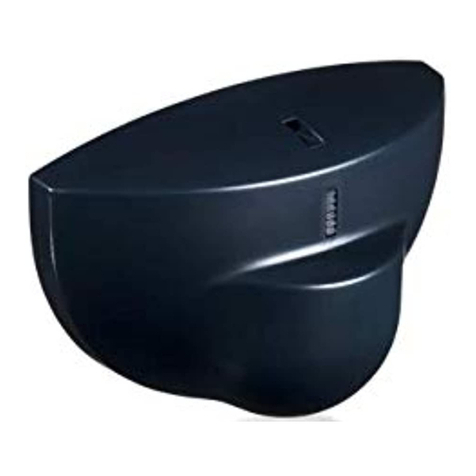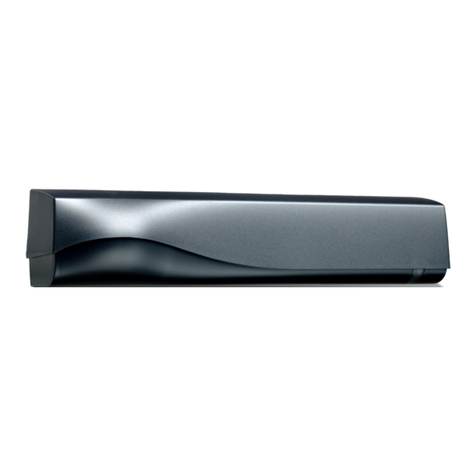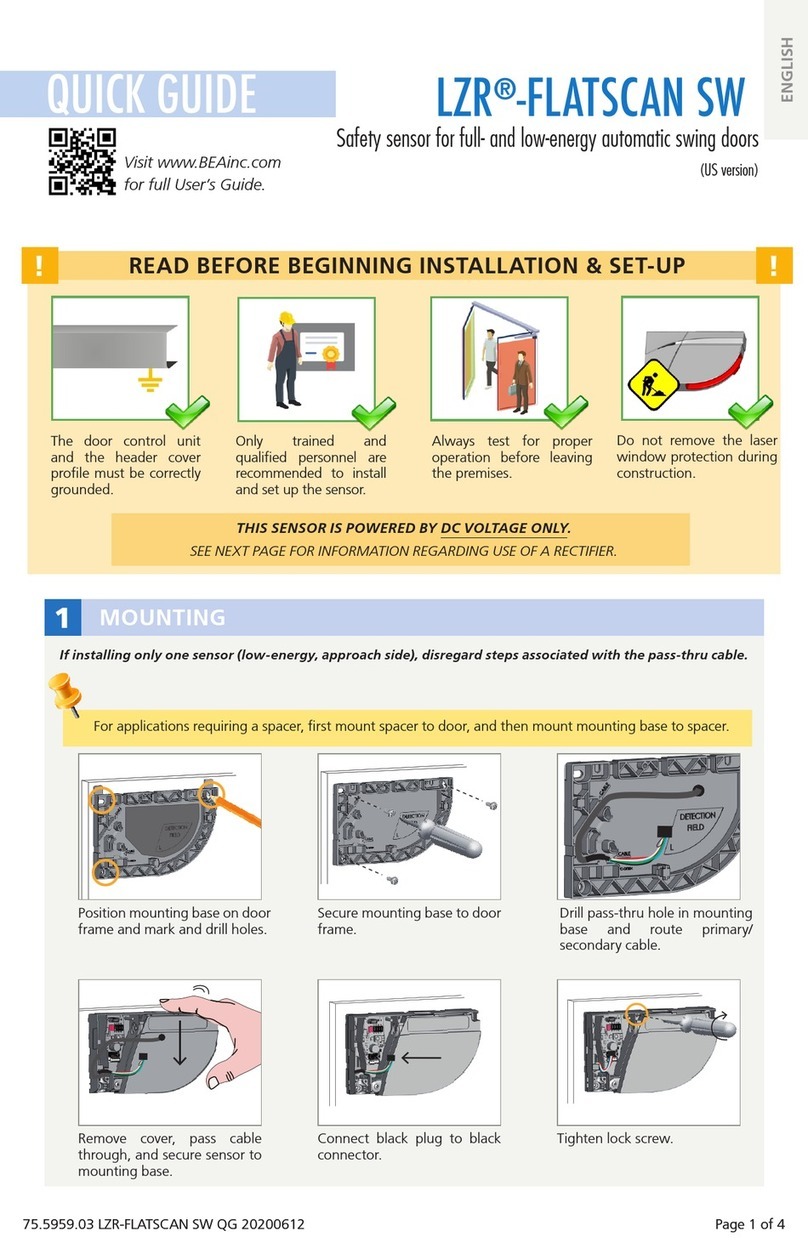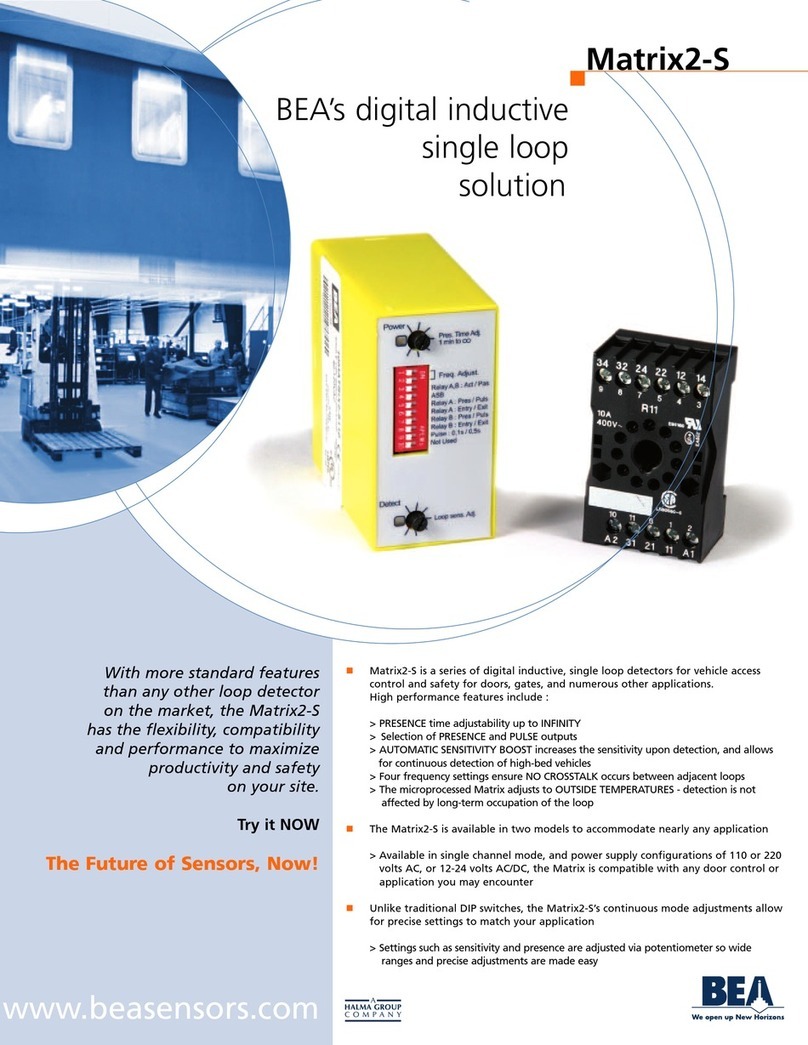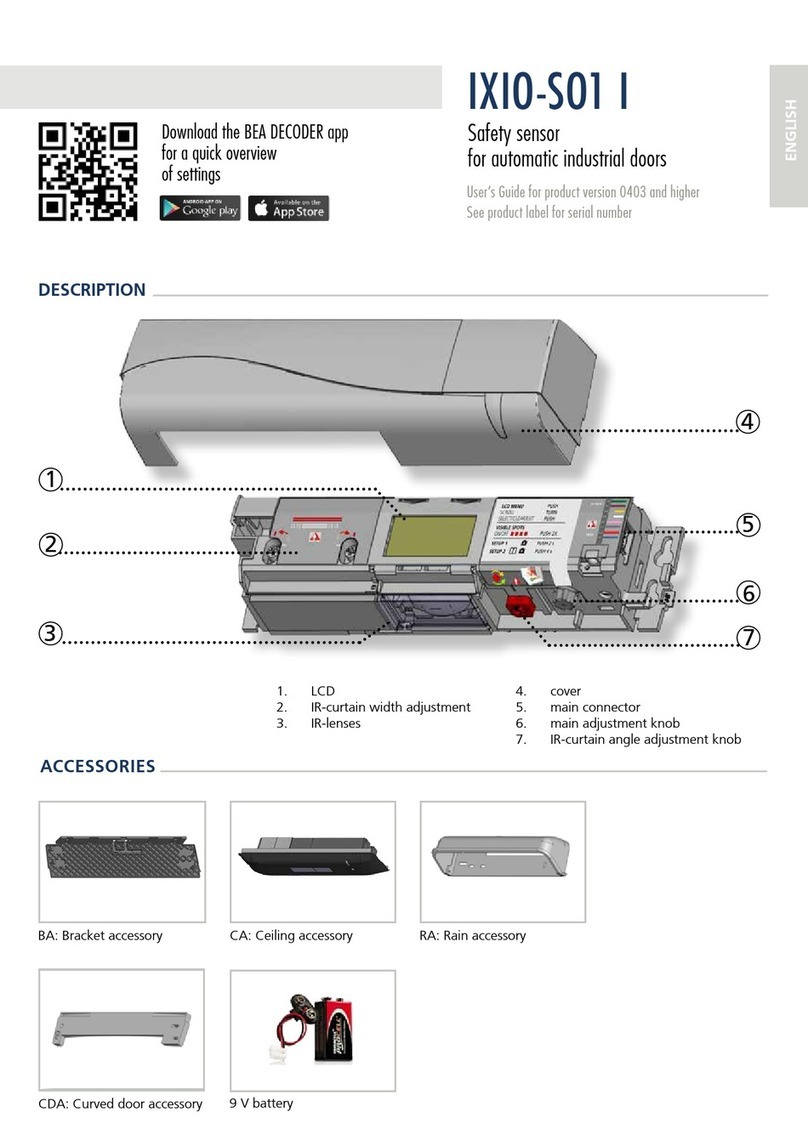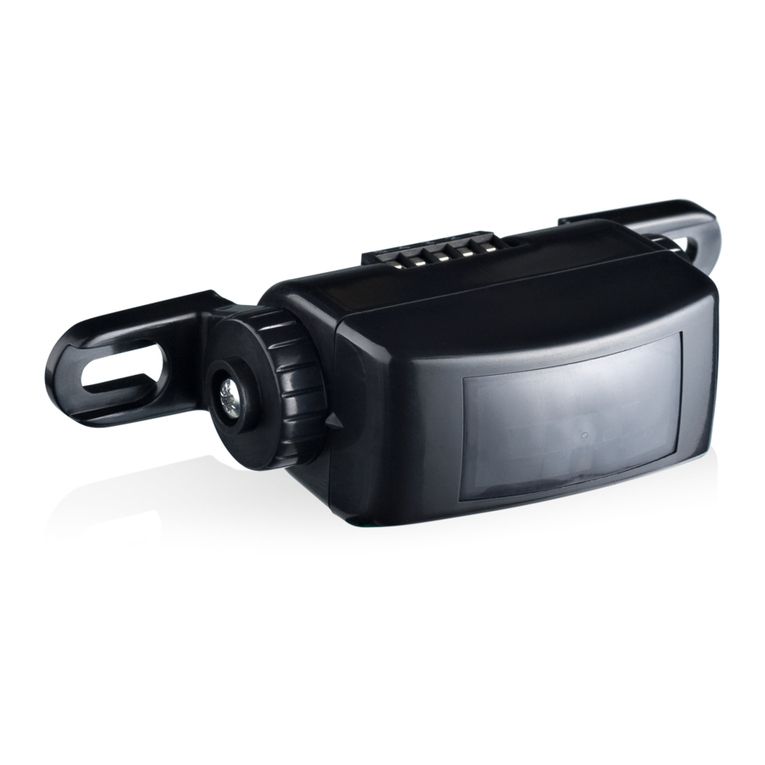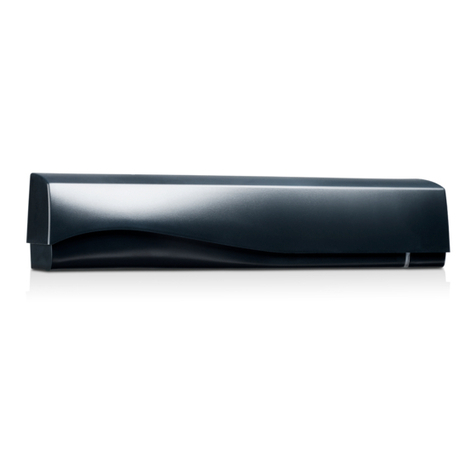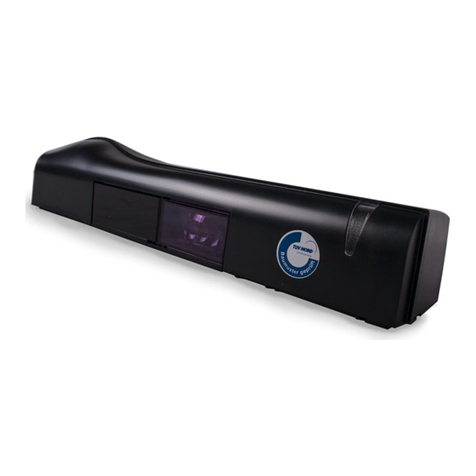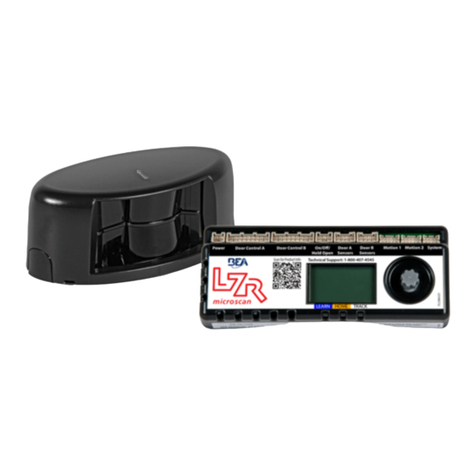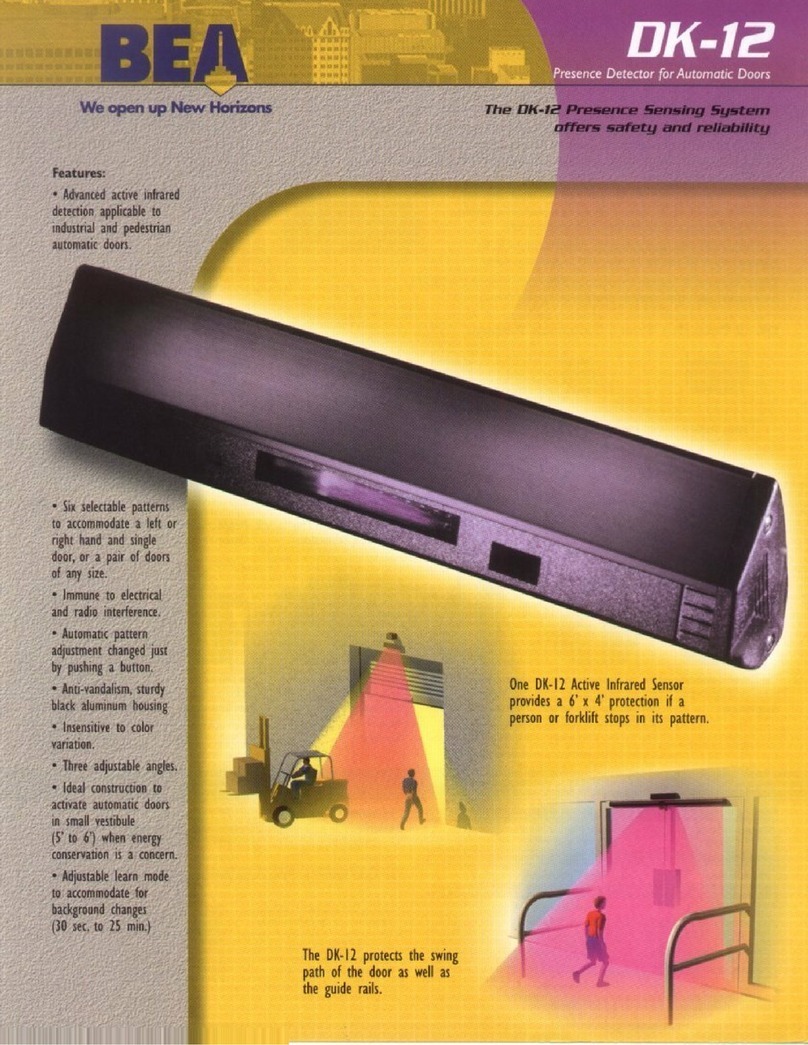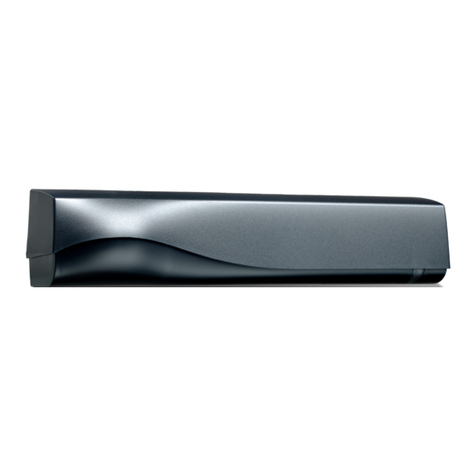
B
A
BA
PZ1
5
< 1 sec.
1. 2. 4.3.
6
8
TESTING AND ADJUSTING
Check the correct positioning of the
safety fields by placing an object in
the detection field.
After changing the angle, the sensor position or the environment, always launch a teach-in and test the correct
positioning of the detection fields.
If necessary, adjust the tilt angle of the laser curtain by turning the
tilt angle adjustment screw (from 0° to 5°).
TEACH-IN
Before launching a teach-in, make sure that:
- glass surfaces near the door are covered
- the door controller is set up first
- the door is closed (use the service mode if needed)
- the door controller is connected to all relay outputs and is fully reacting to them
- the MAIN-SECONDARY cable is connected between the modules
- the detection field is free of snow buildups, heavy rain, snowfall, fog or other objects or people
- the laser window protection is removed (for FLATSCAN SW).
1. To launch a teach-in, press the push button of the MAIN* module briefly. The LED starts to flash red-green quickly.
When installing the sensor on a double swing door, repeat this on the other MAIN module.
2. Wait until all main modules flash green. Position yourself in front of the door and stretch out your arm in front of
you. Make an up and down movement at closing edge level in order to mark the limit of the detection zones. The
LED flashes red while calculating the width of the door wings.
3. Wait until all main modules flash green again. The Flatscan 3D SW will open the door to learn the environment
(if the opening relay has been connected to the door controller). If the door doesn't open you can activate a door
opening. Make sure you are way outside of the detection field (min. 2 m from the door). During the closing
of the door, the sensor flashes red.
4. Once the door is completely closed again and the LED is off, the teach-in is completed.
* A teach-in on the MAIN module configures both the MAIN and the SECONDARY modules. A teach-in on the SECONDARY
module only configures the SECONDARY module. In case the MAIN and SECONDARY modules are not aligned (same height or
same distance from the hinge), first launch a teach-in on the MAIN and then on the SECONDARY module.
MAIN
FIELD WIDTH ENVIRONMENT
Launch a new teach-in each time the sensor tilt angle is changed or new objects are added to/changed in the
detection zone.






